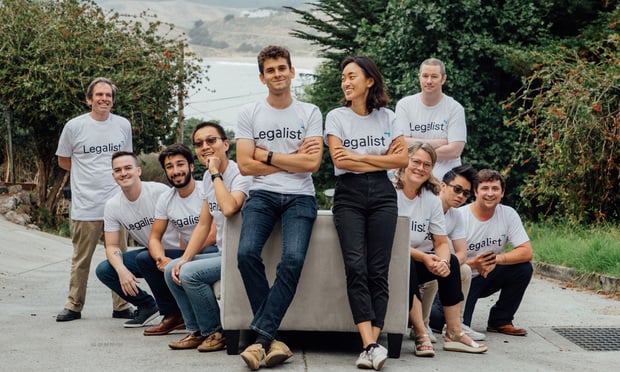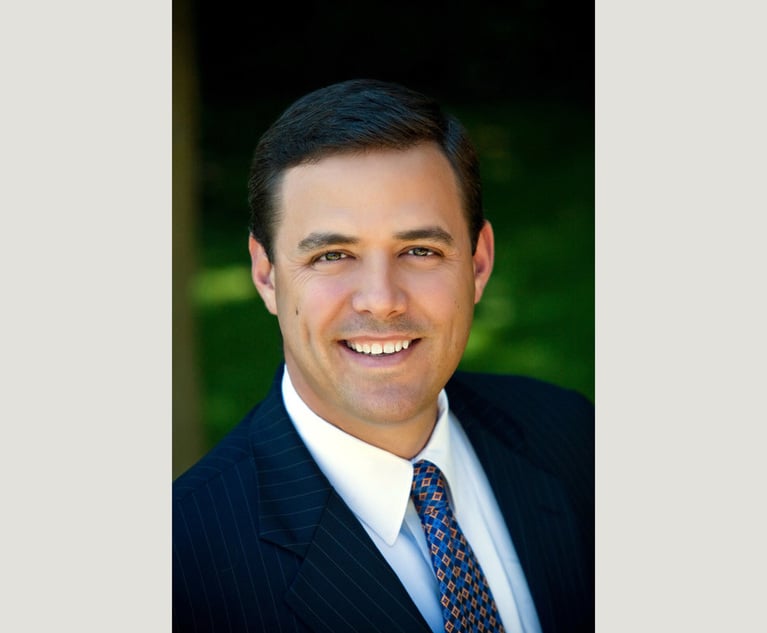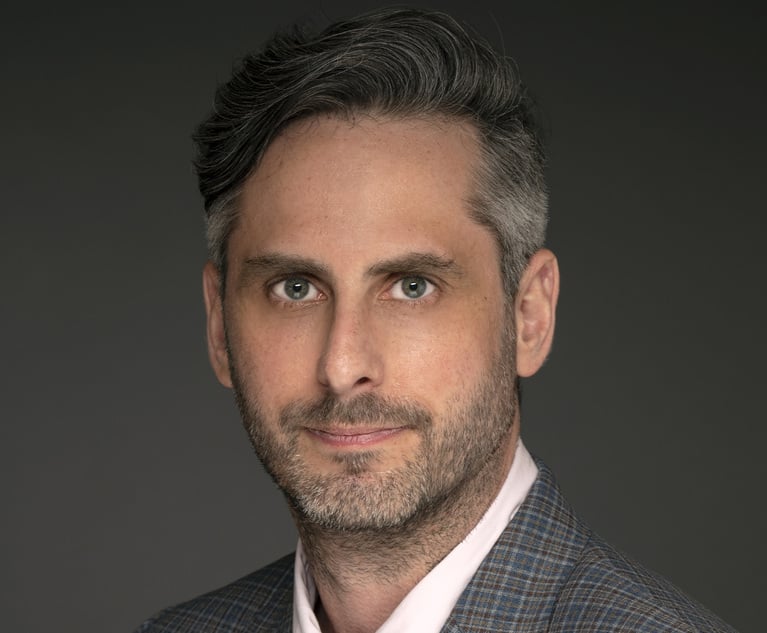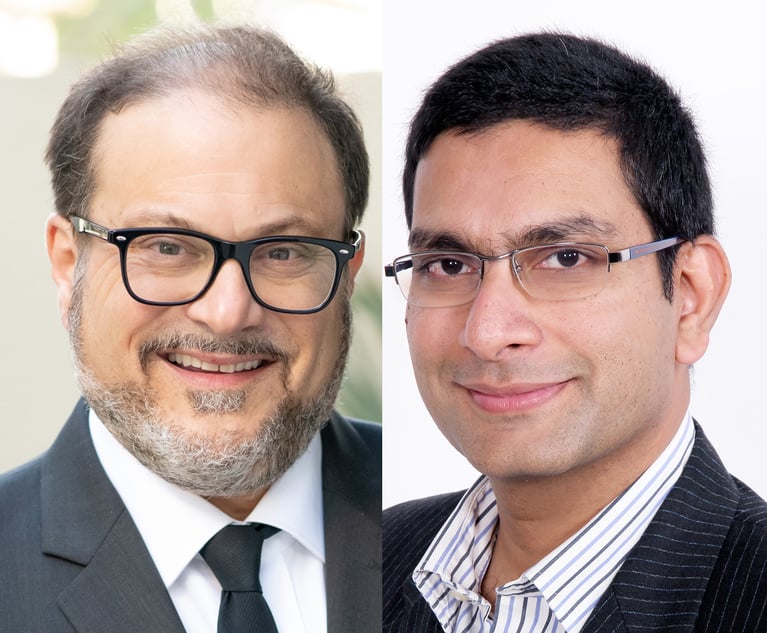What's Next for Legalist, the Litigation Funding Wunderkinds With $100M to Burn
Eva Shang, the 23-year-old CEO of Legalist, shares the company's plans for its second round funding totaling $100 million.
September 25, 2019 at 05:50 PM
6 minute read
 The team behind tech-enabled litigation funder Legalist. (Photo by Hunter Day)
The team behind tech-enabled litigation funder Legalist. (Photo by Hunter Day)
The origin story of tech-driven litigation funder Legalist is not all too different from many disruptive companies that came before it. Like Airbnb, fintech startup Stripe and self-driving car company Cruise, Legalist sprouted out of seed accelerator Y Combinator.
In 2016, Eva Shang dropped out of her Harvard University undergraduate program to work with Y Combinator in hopes of developing a legal analytics company that scraped state court records. While there, Y Combinator partner Jon Levy, formerly of Wilson Sonsini Goodrich & Rosati, tipped off Shang and her business partner Christian Haigh to "a burgeoning new asset class called litigation funding."
Today, Shang is the CEO of the lit funder that uses algorithms to perform due diligence on cases worth no more than $1 million, what Shang calls David vs. Goliath cases. The algorithm crunches state and federal court records, digesting data points such as the judge, the court and the type of case to help the company's underwriting attorneys rapidly perform due diligence.
This month, the company raised $100 million in its second round of financing, and this summer retired Judge Richard Posner of the U.S. Court of Appeals for the Seventh Circuit signed on as an adviser.
Shang shares just what Legalist plans to do with its newfound funding and her outlook on the evolution of the litigation finance industry.
Answers have been edited for length and clarity.
What was your mission going into this latest round of financing? We're a tech-enabled litigation finance company and, in the long run, that allows us to keep our focus on the small-dollar commercial litigation cases that are usually brought by smaller businesses who have breach-of-contract litigation and other commercial cases that aren't necessarily worth billions of dollars that are nevertheless still very meaningful to the business owners that they impact. As you can see we just raised a $100 million fund, but the pitch is the exact same as our first $10 million fund. With a normal funder, as they raised a large fund, I think they would say, "Oh, you know, we have more money now, we can fund larger cases." But we've kept our focus still on the sub-$1 million cases.
We have a pretty good relationship with a lot of other litigation funders, because we are not competitive with the vast majority of the market. If you go on any other litigation funder's website they'll say they only fund a minimum check size of $1 million, whereas we fund a maximum check size of $1 million. So, I think we're serving a totally different case size that doesn't put us in direct competition with them.
What changed that helped you increase your second funding tenfold? One thing is that we proved to investors we can generate returns. The second thing is we proved to investors that there was a definite market demand for these midsized commercial claims. When we're pitching the company, people always ask, "Are there as many small-business litigations as there are big-dollar litigations like the ones that Burford funds?" I think the answer is a resounding yes. It stands to reason that you would have more cases worth a couple million dollars than cases worth hundreds of millions of dollars. We also saw a billion dollars in origination in 2018, so that's a billion dollars in funding applications that we received.
What are your top priorities going into this new stage of the company? Our top priority is to deploy the $100 million into meritorious commercial claims. Broader picture, we do want to make litigation funding more broadly known. I hope in the future, when lawyers take on cases, they will always offer litigation funding to their clients as an option, as opposed to just signing them up on hourly. What I have found is that attorneys these days all know in theory how litigation funding works, they just haven't used it before. And I think the reason they haven't used it is because litigation funders, frankly, do not fund that many cases. So, with this fund we're hoping to fund between 100 and 200 cases over the next five years. My hope is that will be between 100 and 200 attorneys who cannot just say, "I know how litigation funding works in theory," but "I know how litigation funding works in practice." And that will give them greater comfort for using it in future cases.
How has the litigation finance industry changed since you first entered it in 2016? Everyone will tell you it's becoming more widely known, there's an influx in capital, there's a lot of hedge funds and private equity funds that are getting into the space. There's also a growing concern for regulatory issues that were still in their early stages in 2016. There is a growing trend around disclosure. Our stance on disclosure is that insurance has to be disclosed on the defense side for every single litigation where it's available and eventually, I expect litigation funding will follow the same trend. I would hope that just as insurance is widely accepted and considered commonplace and there aren't sideshows during discovery around the fact that there's an insurance company backing the defense, the same would apply for litigation funding. Although in the long run there might be more disclosure, there would also be less fuss when its presence is disclosed.
How have you adapted your algorithm over time? It's constantly a work in progress. One of the things we've learned is that a case's success does not necessarily mean a litigation funder's success. If a case wins, that does not mean it's going to win enough money. It also doesn't mean that you're going to be able to collect on that judgment. So, there is still a need for our two human underwriters to look at the case and verify those elements, which coming from a legal analytics angle was not immediately apparent to us.
And how old are you again? I'm 23.
This content has been archived. It is available through our partners, LexisNexis® and Bloomberg Law.
To view this content, please continue to their sites.
Not a Lexis Subscriber?
Subscribe Now
Not a Bloomberg Law Subscriber?
Subscribe Now
NOT FOR REPRINT
© 2025 ALM Global, LLC, All Rights Reserved. Request academic re-use from www.copyright.com. All other uses, submit a request to [email protected]. For more information visit Asset & Logo Licensing.
You Might Like
View All
How I Made Office Managing Partner: 'Stay Focused on Building Strong Relationships,' Says Joseph Yaffe of Skadden

US Patent Innovators Can Look to International Trade Commission Enforcement for Protection, IP Lawyers Say

How the Deal Got Done: Sidley Austin and NWSL Angel City Football Club/Iger
Trending Stories
Who Got The Work
J. Brugh Lower of Gibbons has entered an appearance for industrial equipment supplier Devco Corporation in a pending trademark infringement lawsuit. The suit, accusing the defendant of selling knock-off Graco products, was filed Dec. 18 in New Jersey District Court by Rivkin Radler on behalf of Graco Inc. and Graco Minnesota. The case, assigned to U.S. District Judge Zahid N. Quraishi, is 3:24-cv-11294, Graco Inc. et al v. Devco Corporation.
Who Got The Work
Rebecca Maller-Stein and Kent A. Yalowitz of Arnold & Porter Kaye Scholer have entered their appearances for Hanaco Venture Capital and its executives, Lior Prosor and David Frankel, in a pending securities lawsuit. The action, filed on Dec. 24 in New York Southern District Court by Zell, Aron & Co. on behalf of Goldeneye Advisors, accuses the defendants of negligently and fraudulently managing the plaintiff's $1 million investment. The case, assigned to U.S. District Judge Vernon S. Broderick, is 1:24-cv-09918, Goldeneye Advisors, LLC v. Hanaco Venture Capital, Ltd. et al.
Who Got The Work
Attorneys from A&O Shearman has stepped in as defense counsel for Toronto-Dominion Bank and other defendants in a pending securities class action. The suit, filed Dec. 11 in New York Southern District Court by Bleichmar Fonti & Auld, accuses the defendants of concealing the bank's 'pervasive' deficiencies in regards to its compliance with the Bank Secrecy Act and the quality of its anti-money laundering controls. The case, assigned to U.S. District Judge Arun Subramanian, is 1:24-cv-09445, Gonzalez v. The Toronto-Dominion Bank et al.
Who Got The Work
Crown Castle International, a Pennsylvania company providing shared communications infrastructure, has turned to Luke D. Wolf of Gordon Rees Scully Mansukhani to fend off a pending breach-of-contract lawsuit. The court action, filed Nov. 25 in Michigan Eastern District Court by Hooper Hathaway PC on behalf of The Town Residences LLC, accuses Crown Castle of failing to transfer approximately $30,000 in utility payments from T-Mobile in breach of a roof-top lease and assignment agreement. The case, assigned to U.S. District Judge Susan K. Declercq, is 2:24-cv-13131, The Town Residences LLC v. T-Mobile US, Inc. et al.
Who Got The Work
Wilfred P. Coronato and Daniel M. Schwartz of McCarter & English have stepped in as defense counsel to Electrolux Home Products Inc. in a pending product liability lawsuit. The court action, filed Nov. 26 in New York Eastern District Court by Poulos Lopiccolo PC and Nagel Rice LLP on behalf of David Stern, alleges that the defendant's refrigerators’ drawers and shelving repeatedly break and fall apart within months after purchase. The case, assigned to U.S. District Judge Joan M. Azrack, is 2:24-cv-08204, Stern v. Electrolux Home Products, Inc.
Featured Firms
Law Offices of Gary Martin Hays & Associates, P.C.
(470) 294-1674
Law Offices of Mark E. Salomone
(857) 444-6468
Smith & Hassler
(713) 739-1250







